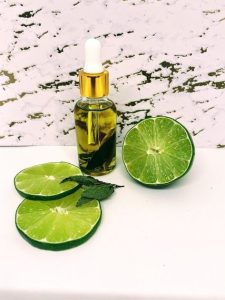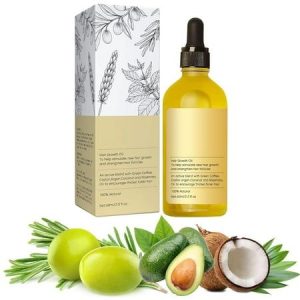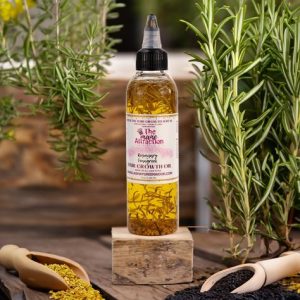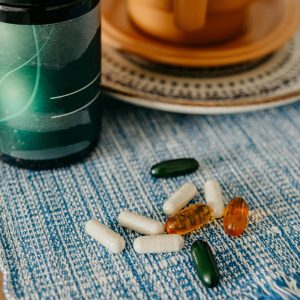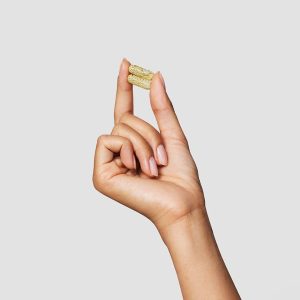
Hair oil can be a wonderful addition to your hair care routine. It adds shine, helps tame frizz, and can even strengthen hair. But how often should you use it? The answer, like many things in beauty, depends on several factors. This guide will explore those factors to help you find the perfect hair oils frequency for your unique hair.
Hair Type Matters
Dry Hair:
Dry hair tends to benefit from more frequent hair oil applications. You can use it daily or every other day to replenish moisture and keep hair looking healthy.
Normal Hair:
Normal hair typically strikes a good balance between moisture and oil production. You can use it 1-2 times a week to add shine and protect hair from styling damage.
Oily Hair:
Oily hair already produces a lot of natural oil. Using hair oil too often can weigh down hair and make it look greasy. Limit hair oil use to 1-2 times a week, focusing on the ends of your hair.
Remember, these are general guidelines. Experiment to find what works best for your hair.
Climate Can Affect Hair Oil Needs
- Hot and Humid: Hot and humid weather can cause hair to frizz. It can help tame frizz and add shine. You might find yourself using it more often during these times.
- Cold and Dry: Cold and dry weather can strip hair of moisture. It can help replenish moisture and prevent dryness. Consider using it more frequently during these times.
Scalp Health also Plays a Role
- Healthy Scalp: If you have a healthy scalp that doesn’t produce excess oil, you can use it more liberally.
- Dry Scalp: A dry scalp can benefit from the moisturizing properties of hair oil. However, avoid applying oil directly to the scalp, as this can clog pores. Focus on the mid-lengths and ends of your hair.
- Oily Scalp: If you have an oily scalp, limit hair oils application to avoid weighing down your hair.
Listen to Your Hair
- Feeling Dry? If your hair feels dry and brittle, it might be a sign you need more hair oil.
- Looking Greasy? If your hair looks greasy after using it, you might be using too much or applying it too often. Reduce the frequency or amount of hair oil you use.
How to Apply Hair Oil
- Less is More: Start with a small amount of hair oil, you can always add more if needed.
- Focus on the Ends: Apply hair oil to the mid-lengths and ends of your hair, avoiding the roots.
- Apply to Damp Hair: Applying it to damp hair helps distribute it evenly without weighing down hair.
Finding the Perfect Hair Oil
There are many hair oils available, each with its unique properties. Experiment to find one that works well with your hair type and preferences. Here are some popular options:
- Argan Oil: Lightweight and nourishing, good for most hair types.
- Coconut Oil: Great for dry hair, but can weigh down fine hair.
- Jojoba Oil: Similar to the scalp’s natural sebum, good for most hair types.
It can be a valuable tool for keeping your hair healthy and looking its best. By considering your hair type, climate, scalp health, and how your hair feels, you can find the perfect hair oils frequency for your unique needs. Remember, a little goes a long way, so start with a small amount and experiment to find what works best for you. Enjoy exploring the world of hair oil and revel in beautiful, healthy hair!
Hair Oil Application Tips and Techniques
Once you’ve determined how often to use it, here are some tips and techniques for applying it effectively:
- Start Small: A little goes a long way with it! Apply a dime-sized amount to start, especially if you have fine hair. You can always add more if needed.
- Less is More for Roots: Avoid applying it directly to your roots. This can weigh down your hair and make it look greasy. Focus on the mid-lengths and ends, where your hair tends to be drier.
- Damp Hair is Best: Applying it to damp hair helps distribute it more evenly and prevents it from making your hair look greasy. Apply the oil after you shower or towel-dry your hair.
- Distribute Evenly: Use your fingers or a wide-tooth comb to distribute it evenly throughout the desired hair section.
DIY Hair Masks with Oil Alternatives
It isn’t the only way to add moisture and shine to your hair. There are many DIY hair mask options you can create using natural ingredients! Here are a few ideas:
-
For Dry Hair:
- Honey Mask: Honey is a natural humectant, meaning it attracts and retains moisture. Mix one tablespoon of honey with two tablespoons of plain yogurt or ripe avocado for a deeply moisturizing hair mask.
- Banana Mask: Bananas are rich in potassium and natural oils, which can help soften and hydrate dry hair. Mash a ripe banana with one tablespoon of water or another suitable liquid for a nourishing mask.
-
For Normal Hair:
- Avocado Mask: Avocados are rich in healthy fats and vitamins that can nourish and add shine to normal hair. Mash half an avocado with one tablespoon of olive oil (or another suitable oil) for a mask that nourishes and adds shine.
- Apple Cider Vinegar Rinse: Apple cider vinegar can help clarify hair and add shine. Mix one tablespoon of apple cider vinegar with one cup of water for a final hair rinse after shampooing.
Experiment and Have Fun!
The key to finding the perfect hair oils frequency and application method is to experiment and see what works best for your hairs. There’s no one-size-fits-all answer, so have fun exploring different options and enjoy the benefits of healthy, beautiful hair!
Conclusion
It can be a wonderful addition to your hair care routine, but finding the right frequency and application method is important. By considering your hair type, climate, and scalp health, you can create a routine that keeps your hair looking and feeling its best. Remember, there are also many DIY hair mask options available that can nourish your hair without using it. With a little experimentation and these helpful tips, you’ll be a hair oil pro in no time!

